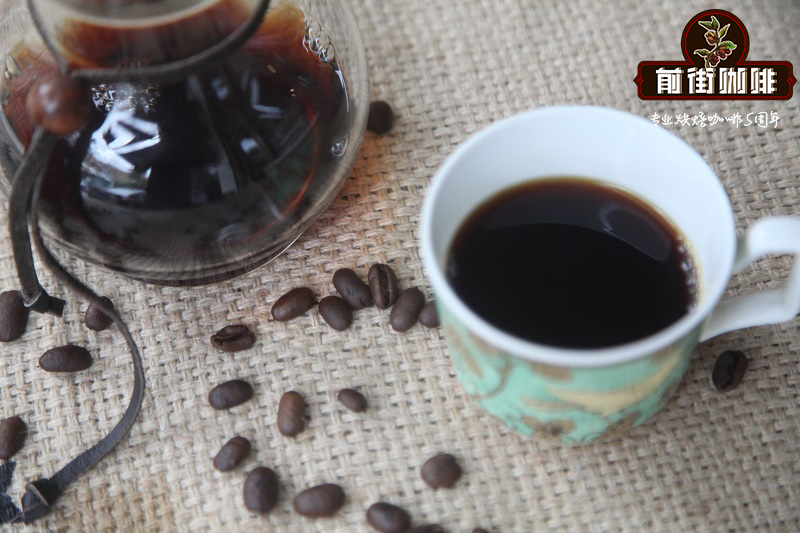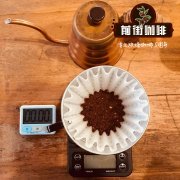Manning flavor taste description Manning changed its name to Batak Coffee? The Origin of Manning

Professional coffee knowledge exchange more coffee bean information please follow the coffee workshop (Wechat official account cafe_style)
Classic Asian flavor, unforgettable Mantenin's unique taste
Indonesia introduced Arabica coffee during Dutch rule in the 18th century. Mantenin is known as "the most important coffee in the world". It is the fourth largest producer in the world with an annual output of 7 million bags, of which Arabica accounts for only 10-15%. The main producing areas are Sumatra, Java and Sulawesi.
The coffee in Sumatra is called Mantenin, which is neither a coffee breed nor a producing area, but it is actually the name of a local race. Lindong is a small town near Lake Toba, which is the largest volcanic lake in the world, and its hinterland is very large, so the difference in coffee quality from the north to the east will be very large. And this is Mantenin, the highest grade coffee in the Lindong producing area.
This area is flat at an altitude of about 1300-1600 meters, and the soil fertility is moderately rich in organic matter. Most coffee trees are shaded and planted. Traditionally, shade trees can maintain moisture and increase soil fertility. Most coffee women do it with their bare hands, including weeding, fertilization, etc., and when coffee cherries turn red and mature, they are harvested and removed by hand. Wet pods are placed in a plastic bag for 10-12 hours to ferment, and then pectin, floats, and shells are removed manually, rarely using a machine. Unlike Central and South America, Indonesian coffee beans are unique in semi-aqueous method, called Giling Basah treatment (the same as Wet Hulled Process).
Manning whose name should be corrected as Batak
(Mandheling) Manning seems to have become synonymous with Indonesian boutique coffee. In fact, Mandailing is neither the name of the Indonesian place name, the name of the producing area, the name of the port, nor the name of the coffee variety, but a mispronunciation of Mandaining, an ethnic group that used to live in Sumatra. Why does this nation serve coffee? There is a legend in it.
According to information from Sumatra, during the Japanese occupation of Sumatra during World War II, a Japanese soldier drank mellow coffee in a cafe and asked the boss curiously, "what kind of coffee is this?" The boss mistakenly thought the Japanese soldier was asking, "where are you from?" "so the boss replied," the Mandaining. "after the war, the Japanese soldier remembered that the delicious coffee he had drunk in Indonesia seemed to be called Mantening, so he asked an Indonesian coffee broker to deliver 15 metric tons of Mantening coffee to Japan, which was surprisingly popular. Mantening was created in this way.
More interestingly, the broker became the famous coffee company in Indonesia today, Pwani Coffee Company (PWN), which is also the trademark owner of Gold Manning. In other words, the Japanese soldier mispronounced the wrong words, pronounced the wrong pronunciation, and the difference between yin and yang created the prestige of Manning and Pwangni.
There is indeed a people in Sumatra called Mandaining. According to textual research, Mandaining is a direct descendant of the Batak people who are good at growing coffee. Centuries ago, the Mandaining gradually migrated southeast, away from Sumatra and away from their close ties with Batak. Interestingly, "Manvanning" is a compound word in dialect, which stands for "losing a mother" and seems to be in memory of the blood of the Batak people. The truth is that the people who still grow coffee in the mountains of north-central Sumatra are Batak, not Mandainin, let alone Manning. If you want to get to the bottom of it, it may be more appropriate for Mantenin coffee to change to Batak coffee, but it is understandable that it has already been established.
Important Notice :
前街咖啡 FrontStreet Coffee has moved to new addredd:
FrontStreet Coffee Address: 315,Donghua East Road,GuangZhou
Tel:020 38364473
- Prev

What is the difference in the flavor of coffee beans between the Central Valley of Costa Rica and the Brenka region?
Professional coffee knowledge exchange more coffee bean information please follow the coffee workshop (Wechat official account cafe_style) [origin] Costa Rica [coffee region] Central Valley [treatment] washing [roasting] medium-light roasting [beans] Caturra [altitude] 1500m [grade] SHB [net content] 227g (half pound) dry aroma: fermented fruit aroma, berries, cocoa, fruit
- Next

This is a different fish.
Professional coffee knowledge exchange more coffee bean information please follow the coffee workshop (Wechat official account cafe_style) this batch of AA coffee fruits are picked and processed by 250 farmers in the Kongyu processing plant under the jurisdiction of the Kabare farmers' cooperative. After peeling, fermenting and cleaning the coffee from the nearby Kongyu River, the coffee will be used in an African drying bed for drying. Every one of them.
Related
- Detailed explanation of Jadeite planting Land in Panamanian Jadeite Manor introduction to the grading system of Jadeite competitive bidding, Red bid, Green bid and Rose Summer
- Story of Coffee planting in Brenka region of Costa Rica Stonehenge Manor anaerobic heavy honey treatment of flavor mouth
- What's on the barrel of Blue Mountain Coffee beans?
- Can American coffee also pull flowers? How to use hot American style to pull out a good-looking pattern?
- Can you make a cold extract with coffee beans? What is the right proportion for cold-extracted coffee formula?
- Indonesian PWN Gold Mandrine Coffee Origin Features Flavor How to Chong? Mandolin coffee is American.
- A brief introduction to the flavor characteristics of Brazilian yellow bourbon coffee beans
- What is the effect of different water quality on the flavor of cold-extracted coffee? What kind of water is best for brewing coffee?
- Why do you think of Rose Summer whenever you mention Panamanian coffee?
- Introduction to the characteristics of authentic blue mountain coffee bean producing areas? What is the CIB Coffee Authority in Jamaica?

